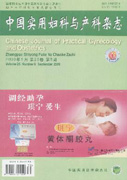|
Changes of luteal hormone secretion during pregnancy and the clinical significance.
YIN Xiang-jie,LI Kun-ming
2021, 37(4):
414-417.
DOI: 10.19538/j.fk2021040103
The establishment and maintenance of a successful pregnancy requires the fine regulation of steroid hormones produced by the corpus luteum. Estrogen and progesterone play a major role in early pregnancy. The development of early pregnancy embryo needs a certain amount of estrogen to maintain,and the increase of progesterone on the basis of estrogen level provides the conditions for inducing endometrium decidualization. Insufficient production of progesterone will affect embryo implantation and growth,and eventually lead to miscarriage. Therefore,both estrogen and progesterone play an important role in maintaining endometrium decidualization in early pregnancy. At present,the clinical application of progesterone and estrogen to prevent abortion and hormone supplementation in patients with luteal insufficiency are mostly based on clinical experience,and are still lacking sufficient evidence-based medical evidence. Therefore,the supplementation of estrogen and progesterone in early pregnancy to "keep the fetus" needs to be more cautious,and unnecessary drugs should be avoided.
|

